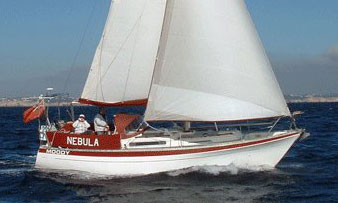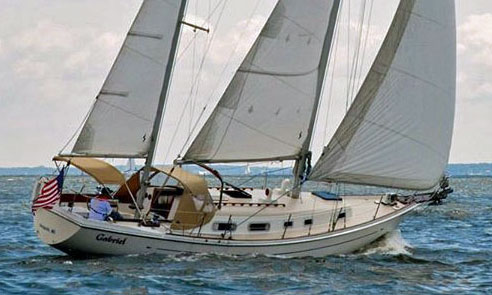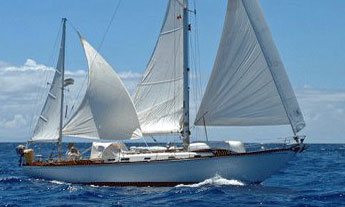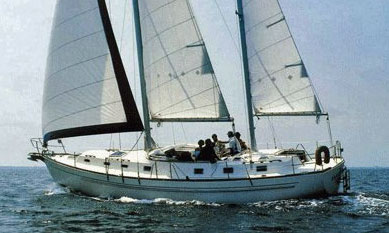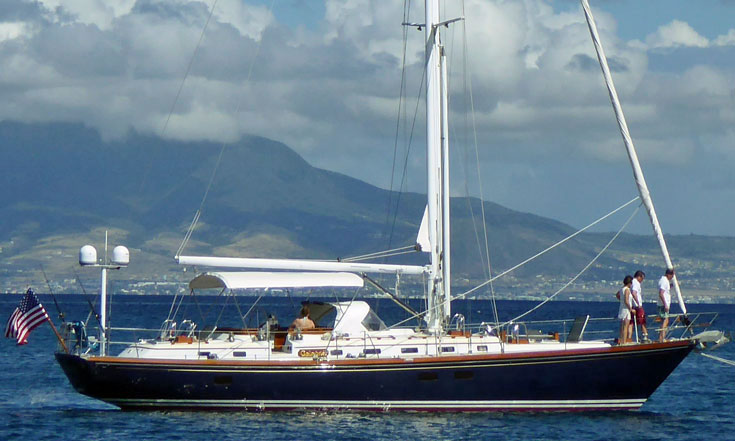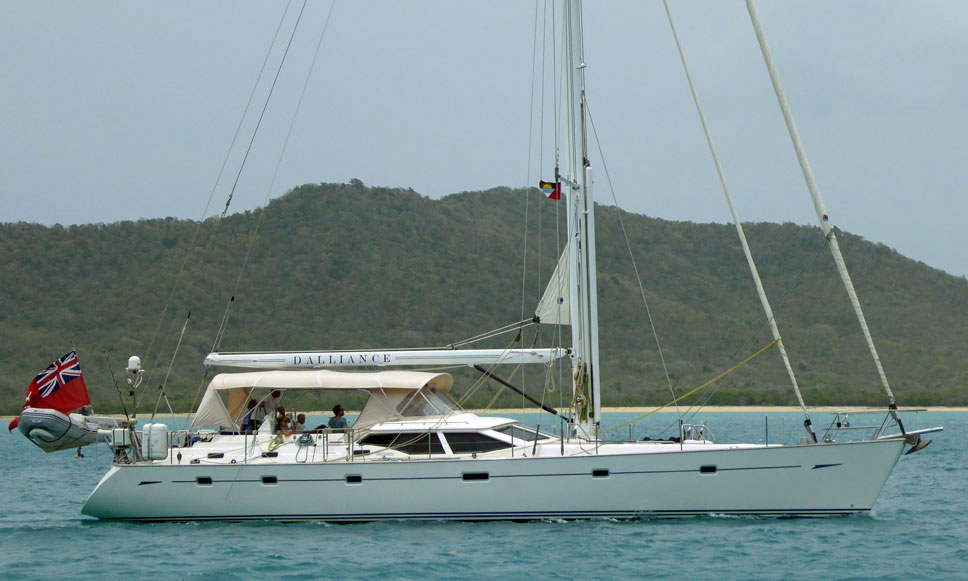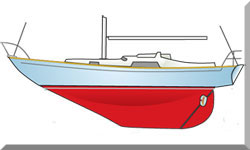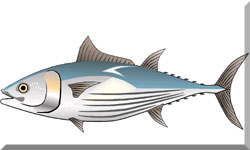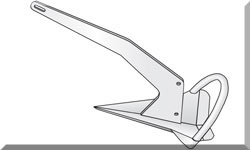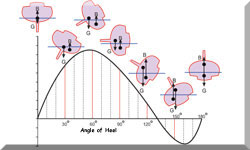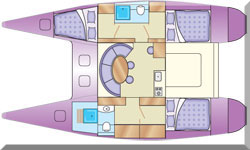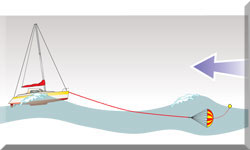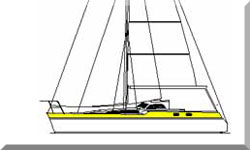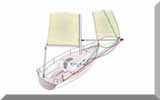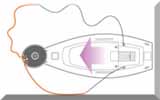- Home
- Cruising Yachts 40' to 45'
- Dix 43 Sailboat
The Dix 43 Sailboat
Specs & Key Performance Indicators
The Dix 43 sailboat was designed by Dudley Dix and manufactured by various custom builders, including Jacobs Brothers in South Africa. The design became available and boats were built from the mid-1990s through at least 2017, and likely continue to be built by individuals.
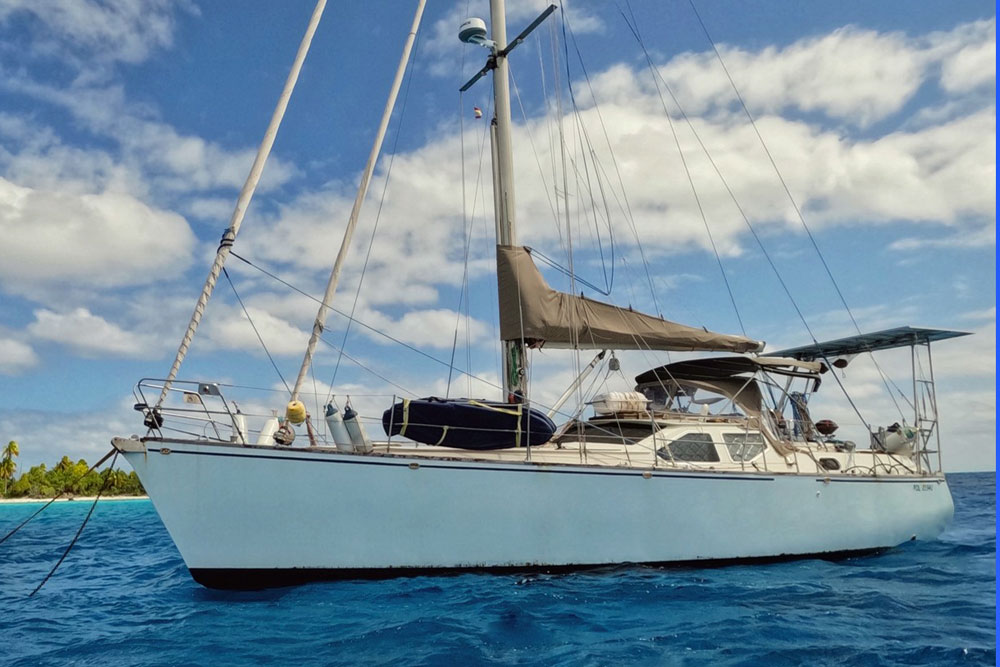 'Taranta', a Dix 43
'Taranta', a Dix 43Published Specification for the Dix 43
Keel & Rudder Configuration: fin keel with a semi-balanced spade rudder, which is protected by a skeg.
Hull Material: Hull construction options include aluminium and steel.
Length Overall*: 13.36 metres (43'10")
Waterline Length*: 11.86 metres (38'11")
Beam*: 4.09 metres (13'5")
Draft*: Two draft options were available: 1.80 metres (5'11") for the standard fin keel, and 1.45 metres (4'9") for a shallower wing keel option.
Rig Type: Cutter
Displacement*: 14,300 kg (31,517 lbs)
Ballast*: 4,000 kg (8,816 lbs)
Sail Area*: 91.44 m2 (984 ft2)
Water Tank Capacity: Approximately 984 litres (260 US gallons). Some builds may feature around 500 litres (132 US gallons).
Fuel Tank Capacity: Approximately 810 litres (214 US gallons). Some builds may have a main tank of 440 litres (116 US gallons) and an additional day tank of 160 litres (42 US gallons).
Hull Speed: 8.35 knots
Designer: Dudley Dix
Builder: Various custom builders worldwide, notably Jacobs Brothers.
Year First Built: Plans were available from 1996, with the first known launch ("Flying Cloud" by Roy McBride) in 2000.
Year Last Built: Boats based on the design were commissioned as late as 2017, and the plans are still available for custom builds.
Number Built: The exact number of Dix 43 sailboats built is not specified due to its nature as a custom-build design.
* Used to derive the design ratios referred to later in this article - here's how they're calculated...
Options & Alternatives
The Dix 43 Pilot and Dix 43HD can be considered later or alternative versions with distinct differences:
- Dix 43 Pilot: The essential difference is the integrated pilothouse, offering enhanced protection from the elements and an indoor helm station, which is highly beneficial for offshore sailing and cold weather cruising.
- Dix 43HD: Designed for robustness in blue water cruising, this version often features an aluminium or steel hull built from cutting files. It typically has a mast stepped further forward than the standard Dix 43, resulting in rig proportions more akin to a double-headsail sloop. The Dix 43HD also carries significantly more ballast, at 5,500 kg (12,125 lbs), compared to the standard 4,000 kg (8,816 lbs), contributing to greater stability.
Sail Areas & Rig Dimensions
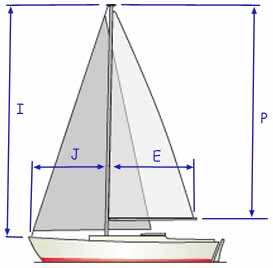 Sail Areas & Rig Dimensions
Sail Areas & Rig DimensionsSail Areas
- Total Sail Area (Main + 100% Fore-triangle): 91.44 m² (984 ft²)
- Mainsail: Approximately 42 m²
- Staysail: Approximately 19 m²
- Genoa: Approximately 30.44 m² (calculated)
Rig Dimensions
The specific rig dimensions (I, J, P, E) for the Dix 43 sailboat are not recorded.
Published Design Ratios
The Key Performance Indicators (KPIs)
The published design ratios for the Dix 43 are:
- Displacement/Length (D/L) Ratio: 238
- Sail Area/Displacement (SA/D) Ratio: 15.7
- Ballast/Displacement Ratio: Approximately 28.0% (4,000 kg ballast / 14,300 kg displacement)
The Comfort Ratio and Capsize Screening Formula for the Dix 43 are not recorded.
Theoretical Sailing Characteristics
The design ratios provide insights into the theoretical sailing characteristics of the Dix 43:
- Displacement/Length (D/L) Ratio of 238: This places the Dix 43 in the moderate to heavy displacement category. This suggests a boat designed for comfort and stability in offshore conditions rather than light-wind speed. It indicates a vessel that will have a good motion in a seaway, be capable of carrying significant stores for extended voyages, and be generally robust.
- Sail Area/Displacement (SA/D) Ratio of 15.7: This ratio falls into the moderate performance range for a cruising sailboat. It indicates that the Dix 43 will be adequately powered in typical cruising winds, offering a good balance between performance and ease of handling. It suggests the boat will be relatively forgiving and not overly sensitive, making it suitable for long-distance cruising without being constantly overpowered.
- Ballast/Displacement Ratio of approximately 28.0%: This is a respectable ballast ratio for a cruising vessel. Combined with the fin keel, it contributes to initial stability, allowing the boat to stand up to its sail plan effectively and providing a comfortable ride in choppy conditions.
But the Design Ratios are Not the Whole Story...
While design ratios offer a quick theoretical snapshot, they have significant limitations in fully defining a sailboat's characteristics:
- Simplified Metrics: Ratios are single numbers and do not account for the complex nuances of hull shape, such as the specific underwater lines, the distribution of volume, or the efficiency of the wetted surface area.
- Keel and Rudder Design: They do not convey details about the keel's aspect ratio, foil section, or sweep, nor the rudder's size, balance, or efficiency, all of which critically impact performance, turning ability, and directional stability.
- Weight Distribution: Ratios only consider total displacement and ballast percentage, not the longitudinal and vertical distribution of weight. A boat's pitching motion, comfort in waves, and resistance to hobby-horsing are heavily influenced by where the weight is placed.
- Rig Efficiency and Configuration: While SA/D gives an idea of power, it doesn't account for mast flexibility, sail shape, sail material, the efficiency of the rig (e.g., cutter vs. sloop), or the ability to finely trim sails for various wind conditions.
- Real-World Factors: Actual sailing performance is heavily influenced by dynamic conditions such as wave height and direction, wind gusts and lulls, currents, and the skill of the crew. Design ratios are static and cannot reflect these dynamic interactions.
- Construction Details: The type of construction material, build quality, and stiffness of the hull and rig can significantly affect a boat's performance and comfort, yet these are not captured in basic design ratios.
- Other Resistances: Factors like propeller drag, appendage drag (e.g., stabilisers, transducers), and even the presence of a dinghy can influence actual speed and performance, but are not included in theoretical ratios.
- Subjective Qualities: Ratios cannot describe subjective qualities like "feel on the helm," ease of motion, or the boat's personality under sail.
Sources & References
More Specs & Key Performance Indicators for Popular Cruising Boats
Recent Articles
-
Passoa 47 Sailboat Review: Comprehensive Specs & Performance Analysis
Jan 04, 26 04:57 AM
Discover the Passoa 47, a legendary aluminium blue water cruiser by Garcia. Explore technical specifications, design ratios, and why its lifting keel is a game-changer for offshore sailors. -
Sailboat Wheel Steering Maintenance & Inspection Checklist
Dec 30, 25 02:32 PM
Keep your vessel’s helm responsive and reliable with our expert maintenance checklist. Master cable tensioning and system inspections to avoid mid-passage failures. -
Modern Boat Electronics and the Latest Marine Instruments
Dec 20, 25 05:27 PM
Should sailboat instruments be linked to the latest boat electronics as a fully integrated system, or is it best to leave them as independent units?

